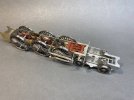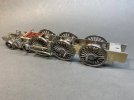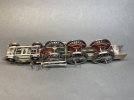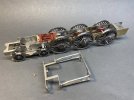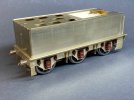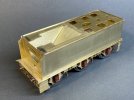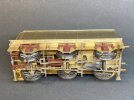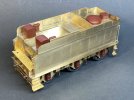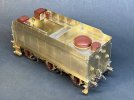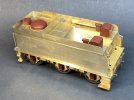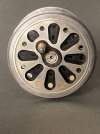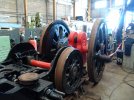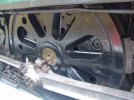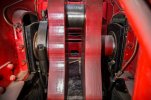More JLTRT Castle build.
Disclaimer, I have wandered so far off the path it's ridiculous, not because I have to, but because I choose to and the meandering is all for a very good reason.....I reserve the right to review and change that point of view at the end

Like the King the kit is designed to have a removable front end but that kind of makes it very difficult to add the massive signature inside motion casting that basically bridges across the joint.
The joining pieces were all removed and the front end grafted onto the rear section and then the next problem was tackled. I had a lot of problems (self inflicted, not having a clue what to do, moons not aligned....you name it) sorting the inside slide bars and cross heads on the King as they were trapped inside the engine, it didn't make painting/masking very easy or cleaning up and running in afterward easy either.
My other problem is AGH wheels, you can't just pop them off the axles like Slaters and wriggle them past the slide bars, ergo the slide bars have to be made removable and thus the outside cylinder blocks.
You could make the brake gear and springs removable but the springs are 3D and the brake gear....if you want to model it with any sort of accuracy is a jumble of pull rods, return cranks and counter pull rods; all in all a lot of work and then there's still the inside motion at the front end that has to come out.
The final solution is the outside cylinders, slide bars and inside motion will all be one unit that drops in from the top...it'll become more clearer as it progress; there's still more prep work and supports to be added to the chassis to achieve that.
The leading axle box, springs and hangers differs in that it has the brake shaft trunnion casting grafted on so those'll be in the machine over night once the ash pan has finished, then I can work on all the brake gear, safe in the knowledge that once in, it can stay in.
